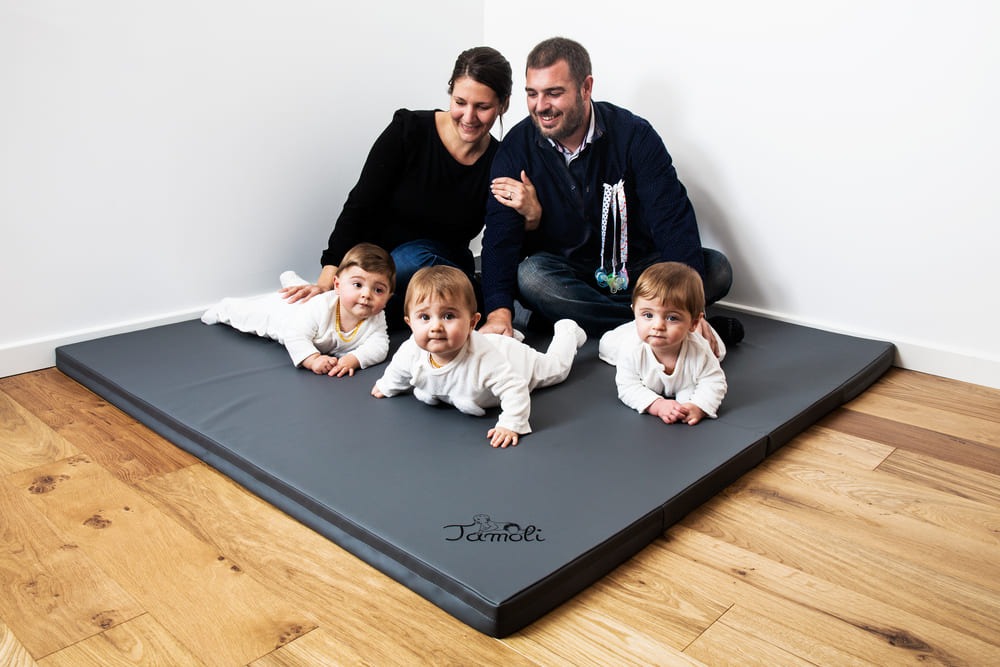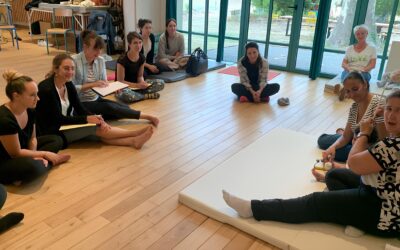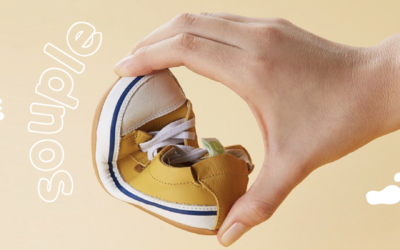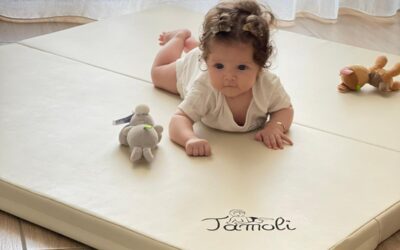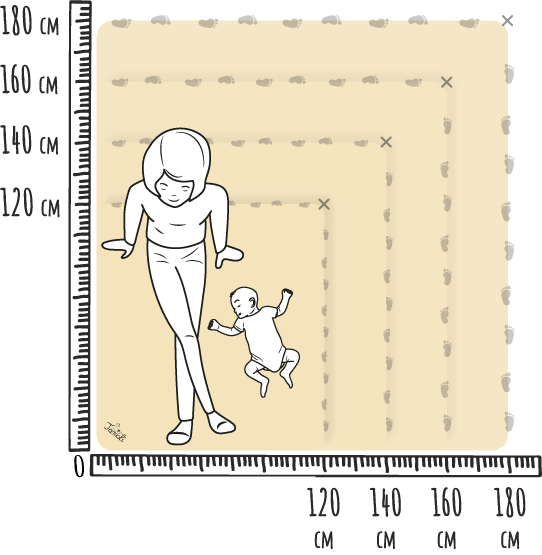Tapis de motricité bébé de haute qualité et évolutif avec TAMOLI
Offrir la possibilité de se mouvoir
Le tapis de motricité bébé Tamoli est conçu dans l’esprit Montessori et dans l’esprit de la motricité libre d’Emmi Pickler.
Le développement moteur du bébé dépend de son installation tout au long de la journée sur un tapis adapté et confortable.
Le TAMOLI recommandé sur France 2 en 2024 !

Qualité premium depuis 2017
Sans Phtalates et sans produit nocif, le tapis de motricité bébé Tamoli possède un revêtement similicuir, une mousse haute densité, des fermetures Éclair avec sécurité enfant tout en étant imperméable et lavable.

Évolutif
Le tapis de motricité bébé Tamoli est un achat indispensable d’une liste de naissance, vous en aurez l’utilité pendant de nombreuses années, car il offre une multitude de fonctionnalités.

Transportable
Très pratique, le Tamoli est un tapis de motricité bébé transformable en lit d’appoint et canapé enfant, il est pliable en son milieu et facilement transportable pour tout usage intérieur et extérieur.
Le tapis de motricité bébé Tamoli vous accompagne tout au long de votre vie
Le tapis de sol bébé Tamoli peut notamment être utilisé comme canapé dans la chambre de l’enfant, mais aussi comme lit d’appoint pour les enfants devenus grands.
Tapis de motricité bébé
Canapé enfant
Lit d’appoint
Créé par une kinésithérapeute spécialisée en pédiatrie
Caractéristiques du tapis de motricité bébé :
Notre palette de couleurs comprend des nuances de gris foncé, gris clair, beige et caramel, toutes spécialement conçues pour s’intégrer parfaitement à votre environnement intérieur. Cette gamme de couleurs polyvalentes offre une toile de fond élégante et discrète pour mettre en valeur votre style et vos préférences en matière de décoration.
Nous avons également à cœur de stimuler la créativité des plus petits. Le tapis de sol bébé TAMOLI offre une surface neutre et un contraste parfait pour que les jouets colorés de votre enfant se démarquent avec éclat. Lorsque les jouets sont posés sur nos tapis, chaque couleur prend vie, incitant votre enfant à explorer, à jouer et à apprendre.
Explorez notre gamme de tapis de motricité bébé qui sont neutres et adapté. Découvrez comment le Tamoli peut apporter une touche de raffinement à votre intérieur tout en stimulant la curiosité et l’émerveillement de votre enfant.
Revêtement
En simili cuir, Tamoli est hygiénique, essuyable, facile d’entretien. Déhoussable, il passe à la machine à laver.
N’hésitez pas à poser le tapis dans le jardin ou sur la terrasse à l’ombre dans la journée.
Tamoli permet à l’enfant :
• D’être installé confortablement sur un tapis de sol bébé adapté.
• D’observer ce qui se passe autour de lui.
• De découvrir son corps par des mouvements sans être limité dans un espace.
• De partager son espace avec d’autres enfants ou adultes grâce à sa taille adaptée.
Grâce à sa surface et à la densité de sa mousse, le tapis de motricité bébé TAMOLI permet aux parents d’être confortablement installé au sol pour jouer, partager et surtout profiter.
Le tapis de motricité bébé Tamoli en quelques mots...
Un bon développement moteur assure bien-être et équilibres futurs
Le tapis de motricité bébé Tamoli vous encouragera à passer des moments au sol avec votre enfant. En effet, grâce à sa mousse d’une épaisseur de 5 cm et de son revêtement en similicuir, il offre un confort absolu à tous les âges. Notre tapis de sol bébé est imperméable et peut être utilisé en intérieur ou en extérieur pour partager des moments privilégiés ensemble.
Les articles de blog de la kinésithérapeute pédiatrique sur le tapis de motricité pour bébé Tamoli
La créatrice du tapis de motricité bébé Tamoli, kinésithérapeute pédiatrique chevronnée depuis plus de 30 ans, partage ses recommandations. Ses conseils sont forgés au fil de son expérience quotidienne avec des parents, confrontés à l’installation de leur bébé tout au long de la journée. Elle offre ainsi un point de vue éclairé sur cette importante facette de la parentalité.
L’enfant Extraordinaire
L’enfant extraordinaire vu par notre kinésithérapeute L’enfant extraordinaire est un enfant handicapé ...
Explorez la Motricité Libre avec le Tapis de jeux bébé XXL TAMOLI.
Le tapis de jeux bébé XXL par Mon Expertise de Kinésithérapeute Spécialisée en Pédiatrie Bonjour à tous les p...
Le tapis de motricité libre TAMOLI chez les professionnels de santé en pédiatrie
Le tapis de motricité libre permet à l’enfant d’explorer son corps et de développer sa motricité à s...
Comment choisir les premières chaussures de bébé ?
Par ma profession de kinésithérapeute spécialisée en pédiatrie, je suis souvent confrontée à la question des c...
Dodo sur le dos et on joue sur le ventre
Ramper, se tenir assis, puis un jour marcher : c’est un véritable défi pour un bébé qui doit acquérir équ...
suivez-nous sur instagram

Expédition rapide
Nous traitons votre demande pour une livraison entre 1 à 3 jours ouvrés.

Garantie 24 mois
Non-affaissement de la mousse, nos coutures, fermetures Éclair
Certifié Intertek
Par le laboratoire mondial Intertek pour la santé de vos enfants.

Aide & Contact
Nous sommes à votre écoute pour toute question sur nos produits





